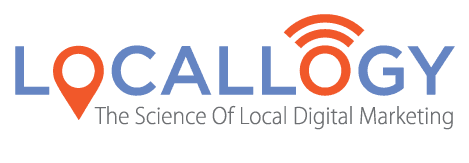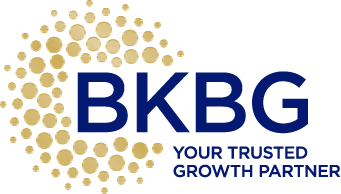The 5 Essential Elements of a Successful Homepage
Your homepage is the most critical page on your website. Though it doesn’t contain as much copy as the other pages on your site and likely doesn’t display as many photos as other pages, it is the page most of your site visitors will land on first. Your homepage’s job is to entice those visitors to want more information, to click deeper into your site, and ultimately, to connect with your brand.
Unfortunately, a lot of local business websites fail to convert visitors into customers and in many cases, it's because their homepage is just not doing its job. Whether you’re building your website on your own, you have in-house talent building your site, or you’ve partnered with a marketing firm like Locallogy, it’s important that you understand the essential parts of a successful homepage.
If you find your homepage is missing any of these key elements, it’s time for an update.
Value Proposition
A quick online search will yield plenty of articles about “crafting a unique value proposition” and “developing a strong value proposition in ten easy steps.” In reality, it's not actually that complicated.
Your value proposition needs to tell your site visitors (read: potential customers) what sort of value they’ll find in your services. It's comprised of three simple things—what you do, who you do it for, and how you will solve the customer's problem.
Here’s an example:
Who are you? A mechanic shop in Lexington, Kentucky.
Who are your customers? Owners of domestic and foreign vehicles in and around Lexington.
What common problem are you solving? Your shop repairs cars and gives honest, upfront pricing to your clients, so there are no surprise costs at the end of the job.
Your value proposition should be explained on your homepage in simple terms that visitors can easily digest and quickly become interested in.
High Quality Images
This homepage element comes with a caveat: Different websites will use images in different ways. Your business verticle will dictate the types of photos on your homepage.
A kitchen and bath remodeling business, for example, should display beautiful images of their successful remodeling projects. That’s what their site visitors are interested in. But the mechanic shop, on the other hand, probably doesn’t need to display photos of the transmission they just finished rebuilding. Instead, the mechanic might opt to display a quality photo of the front of their shop, which will make a connection with local customers.
No matter what sort of business you have and what images are on your homepage, it’s imperative they’re high-quality photos. Remember, “high quality” doesn’t just mean “large.” Large images have an impact on a website’s ability to load quickly, resulting in a poor user experience. Instead, high-quality photos are those that have high resolution, are visually appealing, and topical to the site.
Contact Information
While this seems pretty obvious, many local websites fail to display their business contact info conspicuously. It's often buried in the site footer, randomly mentioned in the middle of a bunch of copy, or it's omitted altogether.
It is vital that your company’s contact information is clearly visible right there on the front page of your site. “But we have a Contact Us page,” you say. Good. Contact Us pages are an important part of any website. But when you rely on that page alone, you’re taking a big chance that your site visitor will actually click on it.
Instead, make it uber-easy for your potential customers to contact you. Include your email address in various places, prominently display your phone number, or add a button that opens a contact email form.
A great place to include your phone number is in your site’s header. This is a practice Locallogy follows with our clients because the phone number remains clearly visible no matter which page of the site the visitor happens to be on. And as a matter of good practice, you should include your contact details in the footer of your site, just don’t bury them among a ton of other small-font copy.
The point, after all, is to make it easy for your potential customers to contact you.
Testimonials
At this point, it’s hard to overstate the importance of reviews and testimonials. The overwhelming majority of consumers check out a company’s reviews before doing business with them. So why do so many businesses still make people go out and search for reviews? Make it easy for your potential customers—display your top testimonials and reviews right there on your homepage. And if they want more, visitors can simply click to another page within your site to view more reviews.
Remember, you want your site visitors to engage with your brand, to click deeper into your site, and ultimately to do business with you. You don’t want people to leave your site in search of reviews on Yelp or Facebook.
Displaying your reviews can be easy with tools like Locallogy’s Review Builder. Applications like Review Builder gather your reviews and ratings from various sites around the internet and funnel them directly to your homepage in a way that is seamless to the site visitor. The client no longer needs to visit another site to read more of your reviews, resulting in more time spent exploring your website.
Call to Action
A call to action (CTA) is arguably the most important part of your homepage. It gives your homepage a purpose. And like your value proposition, your CTA should be simple and easy to understand.
What do you want your site visitor to do? Tell them, in a way that draws their attention, the next steps to take. The best CTA’s require minimal work by the site visitor while gently pushing them through to the next step in the sales conversion process.
Standard CTA’s are often buttons or links that drive the site visitor to a contact form, like, “Click here to schedule an appointment,” or “Click here to email us for a free estimate.
Other CTA’s are a bit more subtle and, rather than pushing the site visitor to make contact, they simply offer more information, such as, “Click here to download our kitchen remodeling guide,” or “Click here to receive and email about our services.”
Keep your CTA’s clear and to the point. Don't bombard your site visitor with CTA’s all over your homepage. A few well-placed calls to action will suffice. Too many will confuse and frustrate your prospective customer.
Without a
call to action on your homepage, you’re assuming your potential customer will know what to do next. And that’s a risky assumption. Leave nothing to chance—make it clear what you want them to do, whether it’s calling your company, booking an appointment online, or joining your mailing list.
A Successful Homepage Converts Visitors to Customers
Your website and, in particular, your homepage, is like your digital business card. But unlike a business card, it has a real job to do—converting visitors from casual shoppers to customers ready to spend their money with you. Your homepage is your sales pitch and like any successful pitch, it needs some essential elements to close the deal.
Looking to update your homepage to convert more visitors to customers? Get with
Locallogy
to learn how we can help.
Get the Latest Content in Your Inbox
Want to be the first to know about new content? Sign up to get our weekly blog posts sent to your email!







